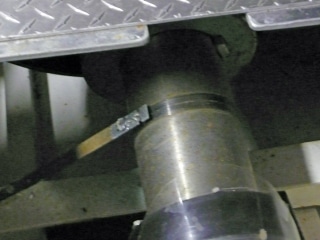
shaft brushboats_8675.jpg

Brass Shaft Brush Connected to Metal Hull Does this Really Work?
We received a good query from reader Gerry this week that is worth sharing a bit of discussion on. The photo he sent in is on his aluminum hulled sailboat. What you see in the photo is a flat brass bar that someone applied some solder to (the grey stuff at the end and rubbing against the prop shaft). The other end of the brass bar is simply screwed to the aluminum cross piece you see running under the shaft. The brass bar gets bent up and is rubbing against the propeller shaft. You can see where it has been rubbing against the shaft as it spins.
So, what is this all about anyhow? The concept here centers around bonding of the shaft to the hull for the purpose of mitigating corrosion. The idea is that propeller shafts really don’t make a very good electrical connection to the rest of a boat’s bonding / cathodic protection system since the propeller shaft is connected directly to the transmission (reverse gear) at the back of the engine. Electrical continuity through the transmission is always a bit dicey, especially when underway. So, how do these shaft brushes do in this situation? Usually not too well frankly. Most of us that deal with matters of marine corrosion don’t actually recommend them. The failure rate for these brushes, and especially something as jury rigged as the one in the photo above is just too high. I’ve checked many of these over the years for electrical continuity and found an open circuit between the shaft and the brush.
So, what’s the answer here? Simply provide adequate shaft anodes to protect the shaft and propeller for a reasonable amount of service time and treat any other underwater metal you wish to protect separately with additional anodes as needed. Most of these shaft brushes are just going for a ride on the boat they’re installed on and really not contributing much to help in the corrosion protection area.







